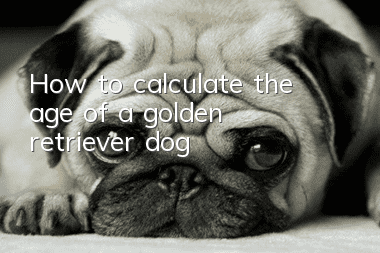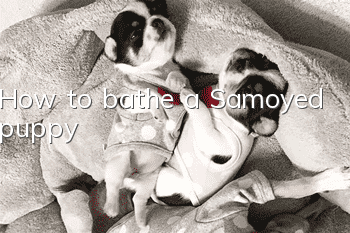How to calculate the age of a golden retriever dog

Puppies will grow their deciduous teeth around 20 days after they are born. At 4 to 6 weeks old, their deciduous incisors will all grow.
At 2 months old, all 28 deciduous teeth have appeared. At 2 to 4 months of age, the first deciduous incisor is replaced.
At 5 to 6 months of age, the 2nd to 3rd deciduous incisors and deciduous canines are replaced.
After 8 months of age, all teeth are replaced with permanent teeth.
A 1-year-old dog with permanent teeth that are all long, white and bright, and have sharp protrusions on the incisors.
In a 1 and a half year old dog, the large peak of the first incisor of the lower jaw is worn to the level of the small peak.
In a 2 and a half year old dog, the peak of the second incisor of the lower jaw was lost.
In a 3-and-a-half-year-old dog, the peak of the first incisor of the upper jaw was lost.
In a 4 and a half year old dog, the peak of the second incisor on the upper jaw was lost.
In a 5-year-old dog, the peak of the third incisor of the mandible is slightly obliterated, while the first and second incisors of the mandible are ground into a rectangular surface.
In a 6-year-old dog, the peak of the third incisor of the mandible has been worn away, and the canine teeth have been ground into a blunt round shape.
In a 7-year-old dog, the third incisor tooth of the mandible is worn to the root of the tooth, and the wear surface is vertically oval.
In an 8-year-old dog, the first incisor of the mandible is worn and tilted forward.
In a 10-year-old dog, the wear surfaces of the first maxillary incisor and the second mandibular incisor are longitudinally oval.
A 16-year-old dog with missing incisors and incomplete canines.
- How to make Samoyed recognize its owner
- How to keep a Samoyed from shedding
- What should Golden Retriever dogs eat to grow well?
- What are the symptoms of calcium deficiency in Poodles?
- When should poodles shave their lanugo?
- When does VIP get her period?
- How to cut a Samoyed dog's hair
- How to clean anal glands in Bichon Frize
- How to clean up Bichon Frisbee ear mites
- How to make a Samoyed have more hair



